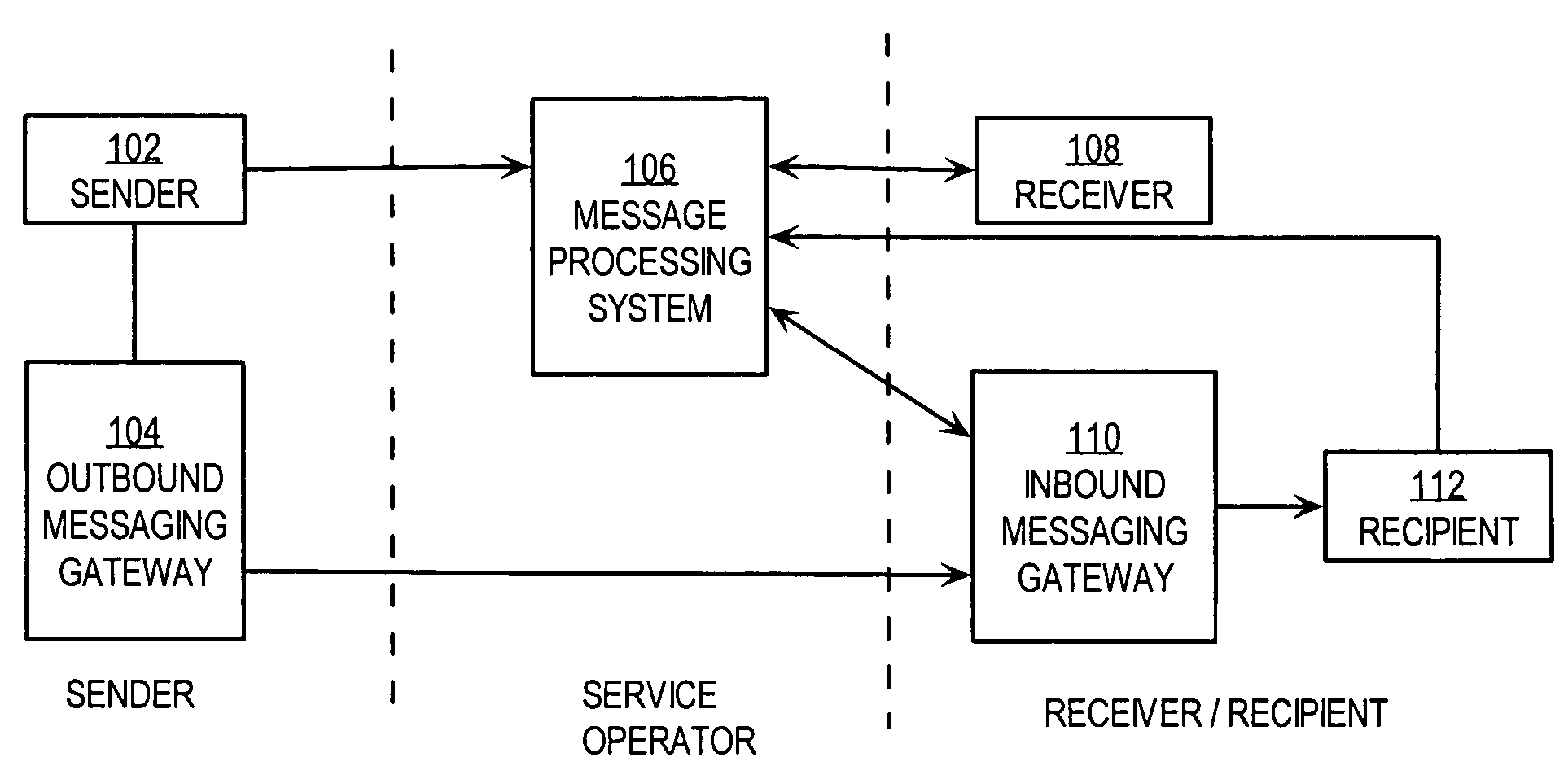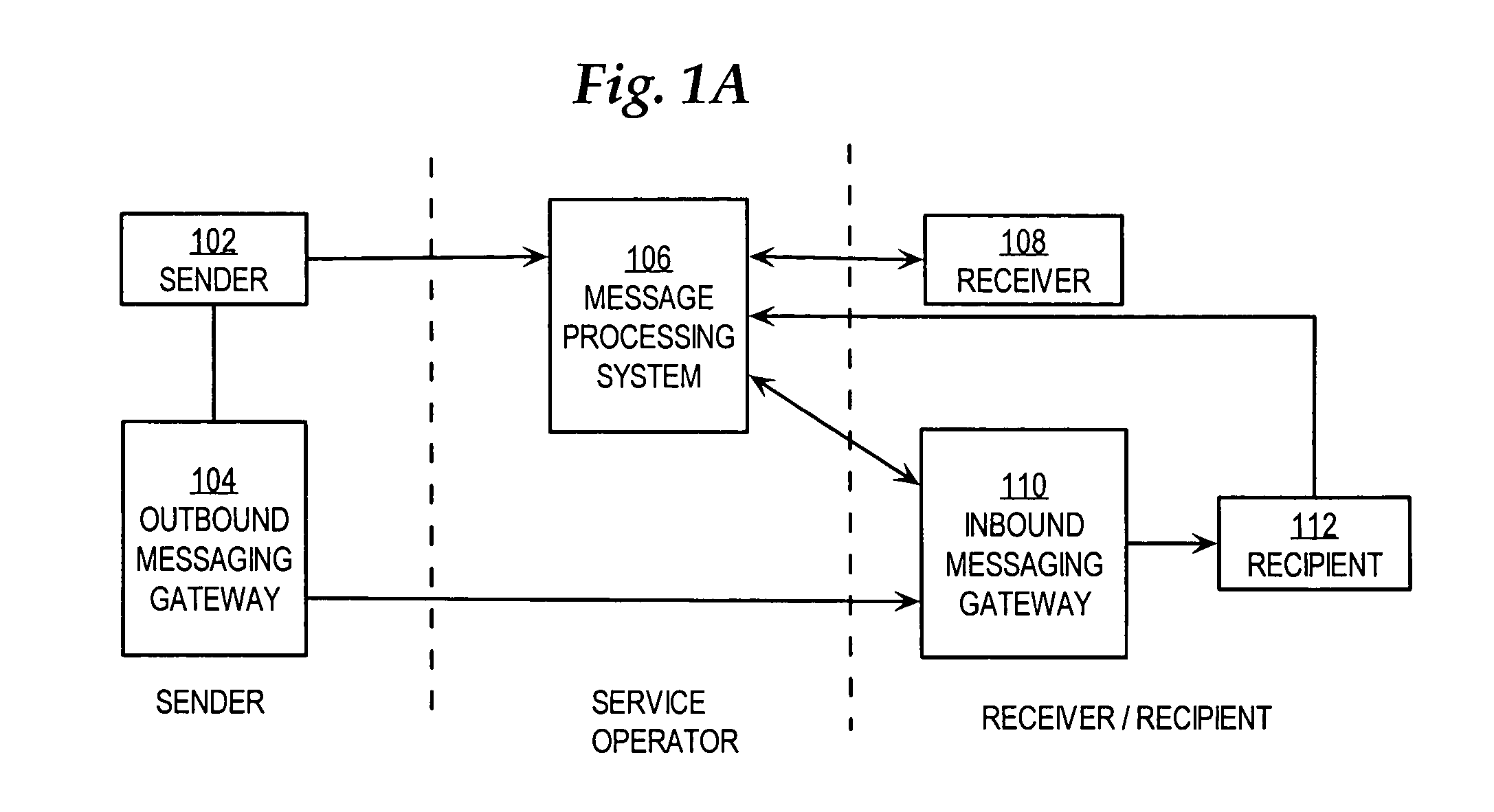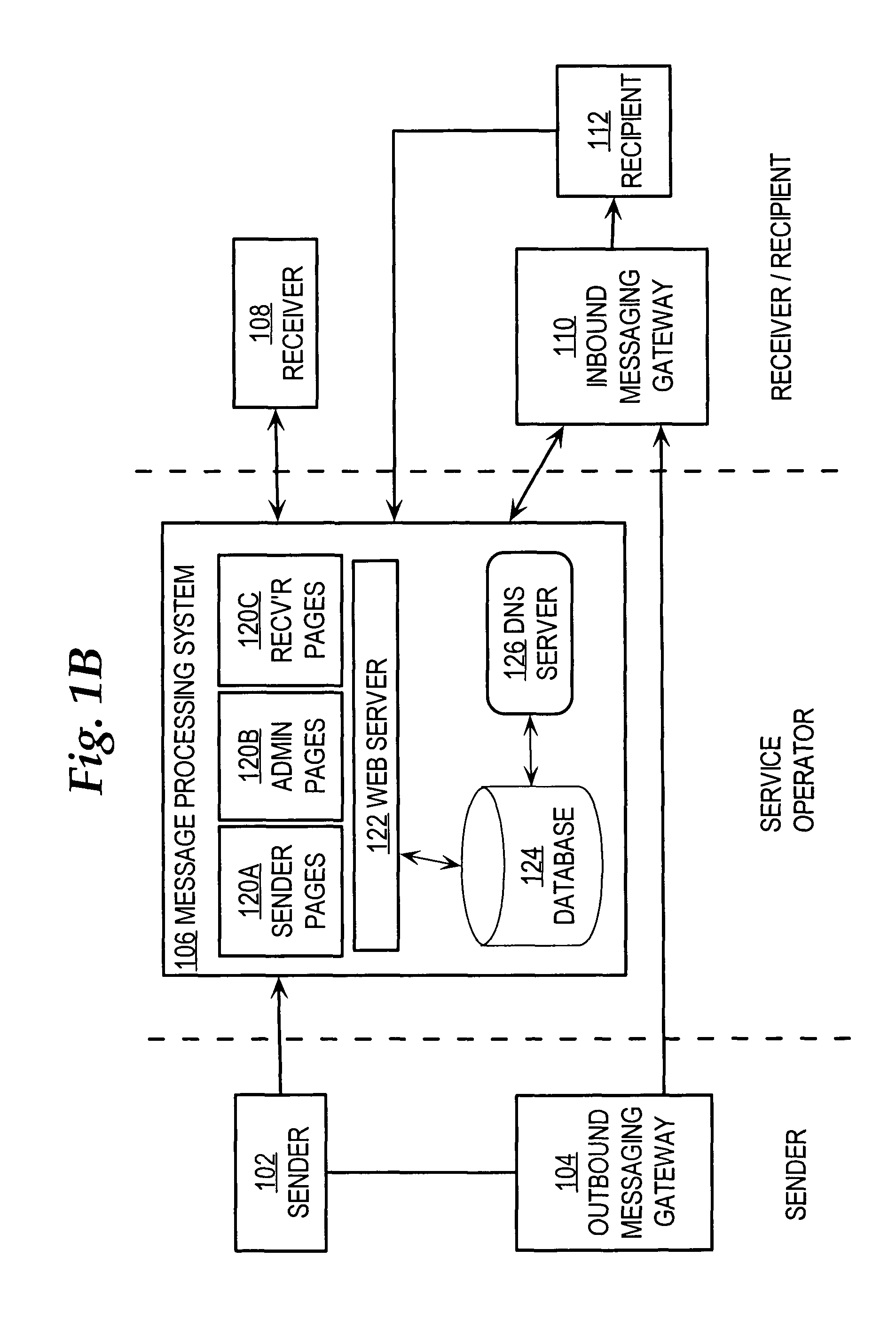Electronic message delivery with estimation approaches and complaint, bond, and statistics panels
a technology of electronic message and estimation approach, applied in the direction of unauthorized memory use protection, instruments, data switching networks, etc., can solve the problems of receivers receiving unwanted messages, high perceived direct and indirect costs of receiving “spam” and inconvenient system use and cumbersome us
- Summary
- Abstract
- Description
- Claims
- Application Information
AI Technical Summary
Problems solved by technology
Method used
Image
Examples
Embodiment Construction
[0045]Electronic message delivery approaches are described in this application. In the following description, for the purposes of explanation, numerous specific details are set forth in order to provide a thorough understanding of the present invention. It will be apparent, however, to one skilled in the art that the present invention may be practiced without these specific details. In other instances, well-known structures and devices are shown in block diagram form in order to avoid unnecessarily obscuring the present invention.
[0046]Embodiments are described herein according to the following outline:[0047]1.0 General Overview[0048]2.0 Electronic Message Delivery Approaches[0049]2.1 Terminology[0050]2.2 System Structural and Functional Overview[0051]2.3 Encrypted Token Approach For Advertising Message Source[0052]2.4 Determining Whether to Accept a Message[0053]2.5 Processing a Report of an Unwanted Message[0054]2.6 Penalizing Senders[0055]2.7 Estimation Approaches[0056]2.8 Exampl...
PUM
 Login to View More
Login to View More Abstract
Description
Claims
Application Information
 Login to View More
Login to View More - R&D
- Intellectual Property
- Life Sciences
- Materials
- Tech Scout
- Unparalleled Data Quality
- Higher Quality Content
- 60% Fewer Hallucinations
Browse by: Latest US Patents, China's latest patents, Technical Efficacy Thesaurus, Application Domain, Technology Topic, Popular Technical Reports.
© 2025 PatSnap. All rights reserved.Legal|Privacy policy|Modern Slavery Act Transparency Statement|Sitemap|About US| Contact US: help@patsnap.com



